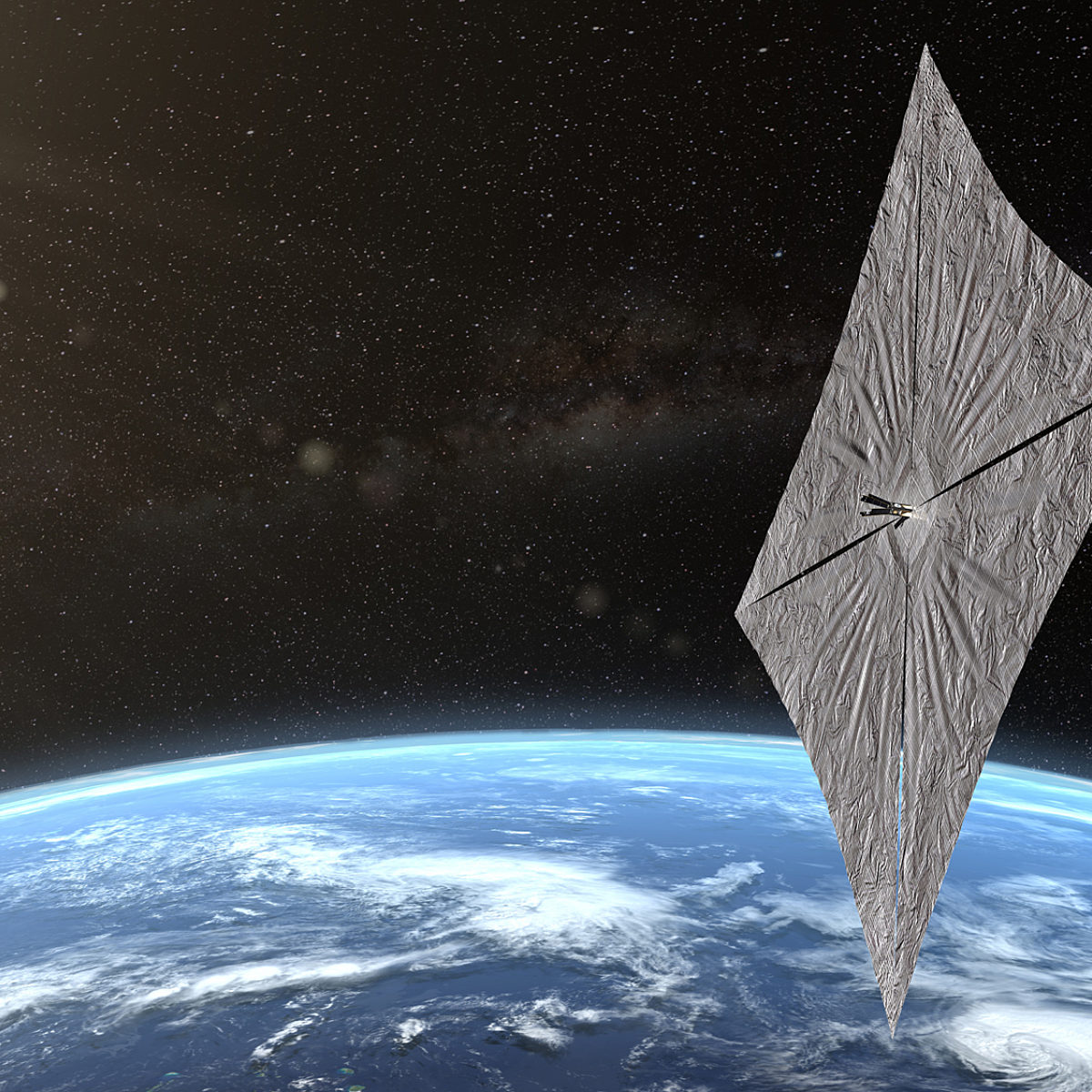Jason Davis • Jun 05, 2019
What's the Difference between LightSail 1 and LightSail 2?
In 2015, The Planetary Society's LightSail 1 spacecraft completed a successful test flight in low Earth orbit. This month, LightSail 2 will ride a SpaceX Falcon Heavy rocket to orbit on a mission to become the world's first small spacecraft to be propelled by sunlight alone.
While LightSail 1 and 2 look nearly identical at a glance, there are a few important hardware differences between the two spacecraft. LightSail 2 contains numerous small improvements thanks to lessons learned during the LightSail 1 test mission, and most importantly, there's a big difference in where LightSail 2 will go and what it will do.
LightSail, a Planetary Society solar sail spacecraft
LightSail is a citizen-funded project from The Planetary Society to send a small spacecraft, propelled solely by sunlight, to Earth orbit.
Mission
The most important difference between the two missions is that LightSail 2 will fly to a higher orbit and attempt to raise its orbit with solar sailing.
In order for the slight thrust from solar sailing to overcome atmospheric drag, LightSail must fly to an orbit higher than roughly 700 kilometers. Back in 2014, The Planetary Society announced it had found a free ride to a 720-kilometer circular orbit courtesy of Georgia Tech’s Prox-1 spacecraft, which was scheduled to launch aboard SpaceX's new Falcon Heavy rocket as part of the Air Force’s STP-2 payload.
At the same time, NASA's Educational Launch of Nanosatellites program—ELaNa for short—offered us a free launch slot aboard an Atlas V rocket traveling to an orbit lower than what is required for solar sailing. Since the LightSail program had a flight spare, we decided to fly that spacecraft as LightSail 1, and use it as an opportunity to validate the spacecraft's sail deployment system. The sail unfurled successfully and we returned a picture of the deployed sail from space. The test flight was also fortuitous because it revealed numerous small problems that could be corrected before the LightSail 2 mission.
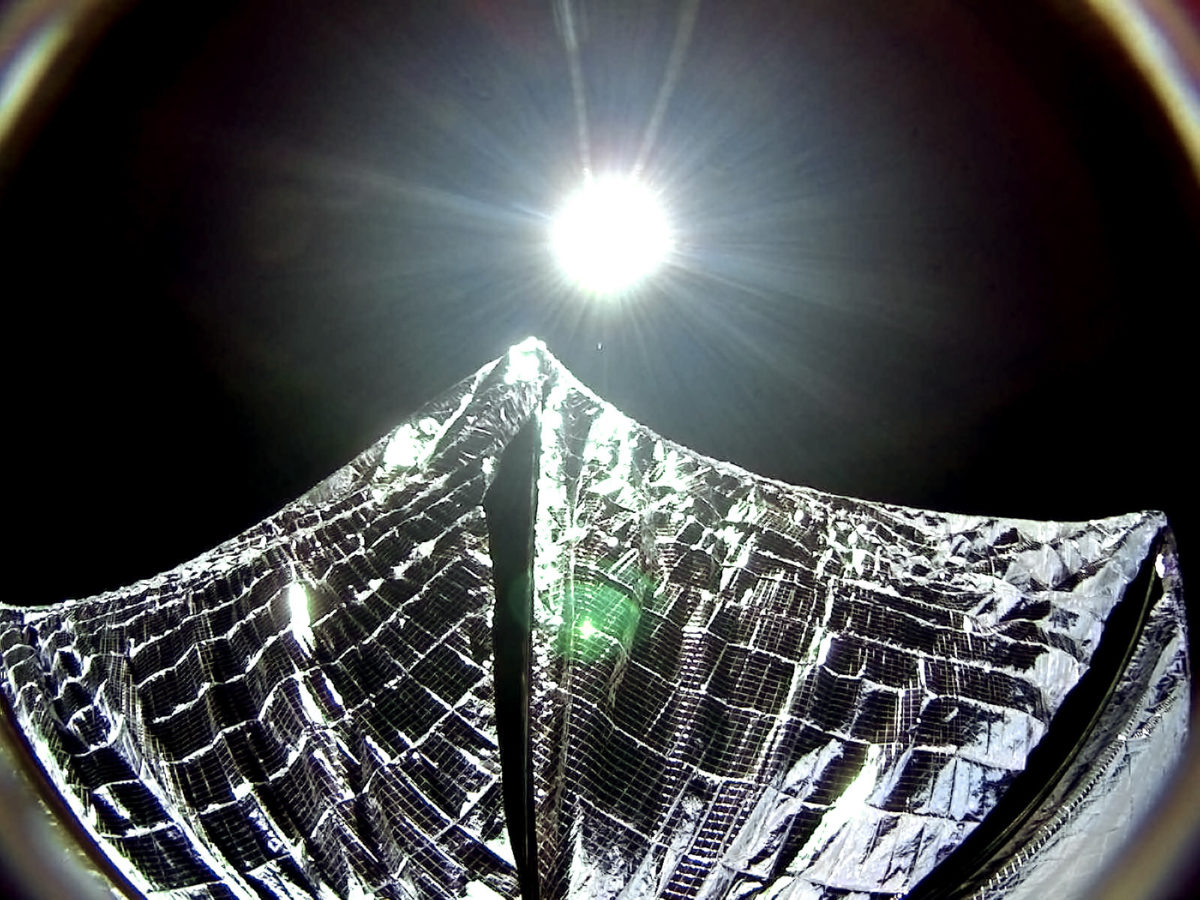
Momentum wheel
Each orbit, LightSail 2 has to make two, 90-degree turns of its solar sail, turning the thrust from sunlight on and off as the spacecraft moves away and towards Sun, respectively. Here’s a handy animation of what that looks like:
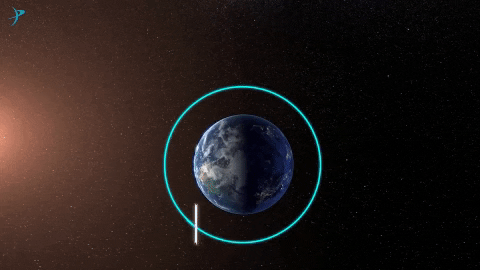
To make those 90-degree turns, LightSail 2 spins a single momentum wheel, which turns the spacecraft about one axis. Since LightSail 1 didn't fly high enough to solar sail, it didn't need a momentum wheel, but LightSail 2 has one.
Here's a picture of the momentum wheel prior to being installed in LightSail 2 in November 2015:
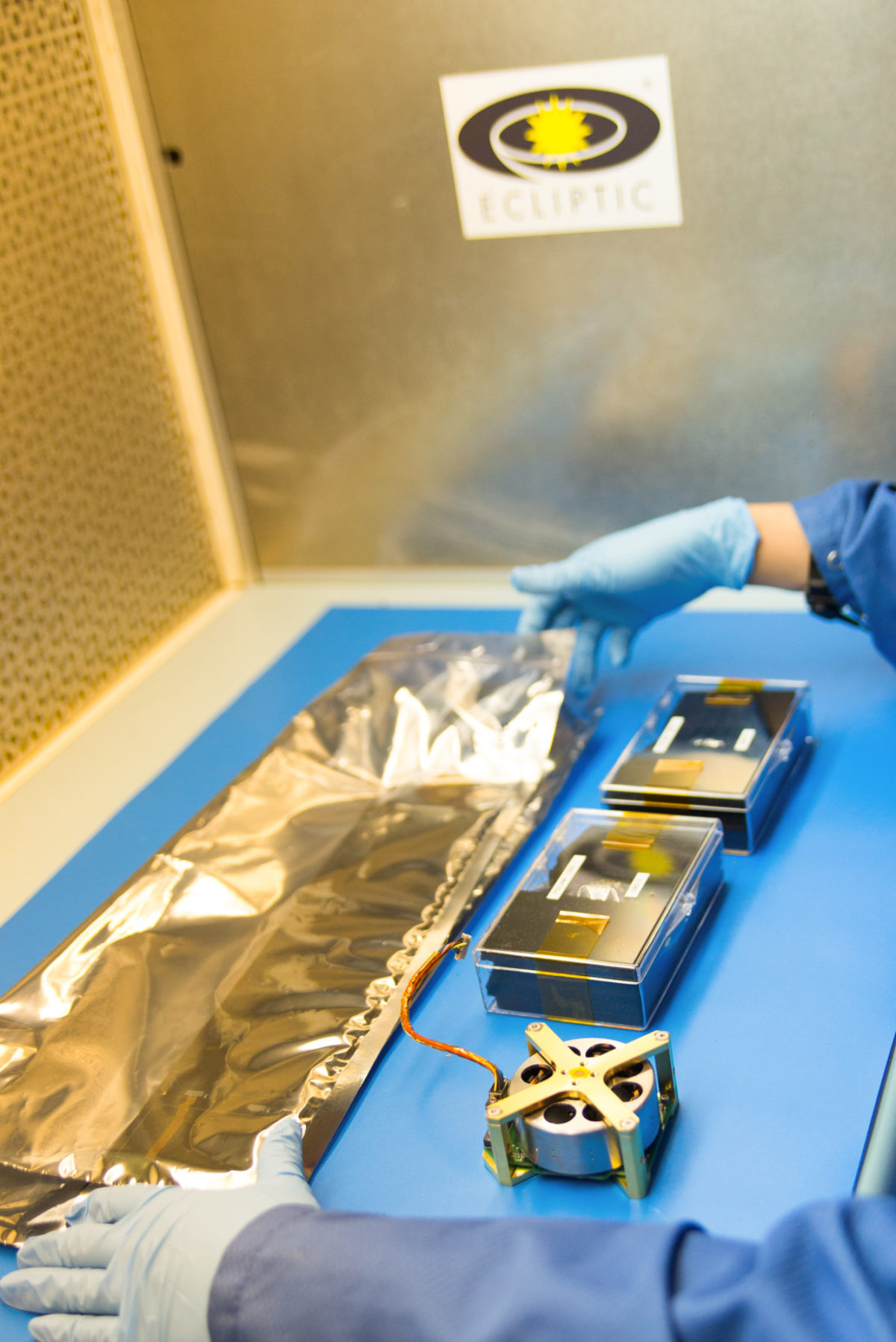
And here's a short video from testing in 2016, where you can actually see the wheel spinning inside the spacecraft:
Laser ranging
Another LightSail 2 hardware addition is a small cluster of mirrors on the bottom of the spacecraft that will allow ground-based lasers to precisely measure the spacecraft's orbit using a technique called laser ranging. (LightSail 1 also had a few, but the cluster on the bottom is new for LightSail 2.)
Basically, laser ranging means zapping a spacecraft with a laser and measuring how long it takes for the signal to bounce back. Since our primary mission objective is measuring a change in LightSail 2's orbit due to solar sailing, adding mirrors for laser ranging is a very useful upgrade. The lasers on the ground will come courtesy of the International Laser Ranging Service.
Here's a close-up picture of the mirrors during spacecraft integration. Note that there's blue tape over them here to keep them clean; that’s since been removed for flight.
Other hardware
Other LightSail 2 improvements since the 2015 test flight include upgraded computer boards, and markings on the sail booms that will allow the team to examine images from space to determine if the solar sails are fully deployed.
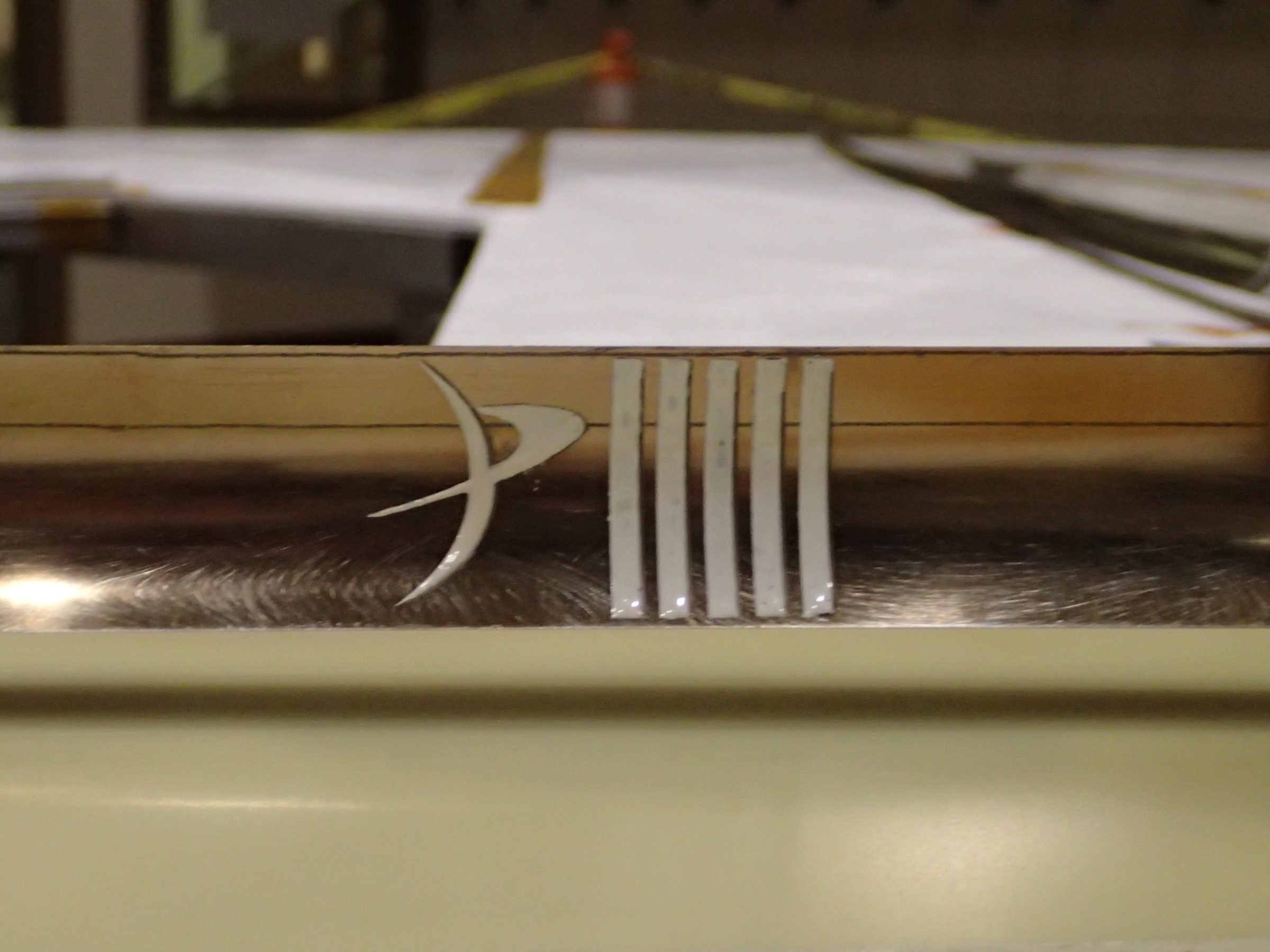
Mini-DVD
LightSail 2 also has a mini-DVD containing a Planetary Society member roster, a list of Kickstarter contributors, and image and name submissions from the Society's "Selfies to Space" campaign.
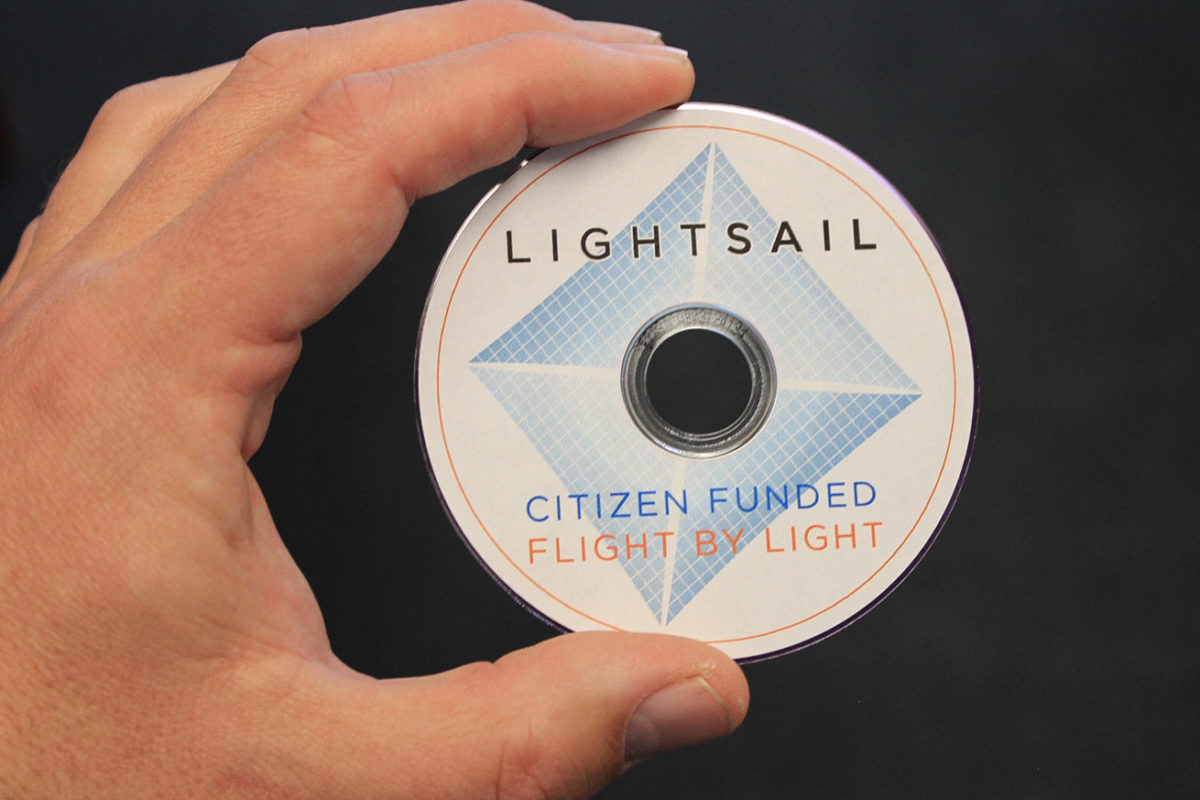
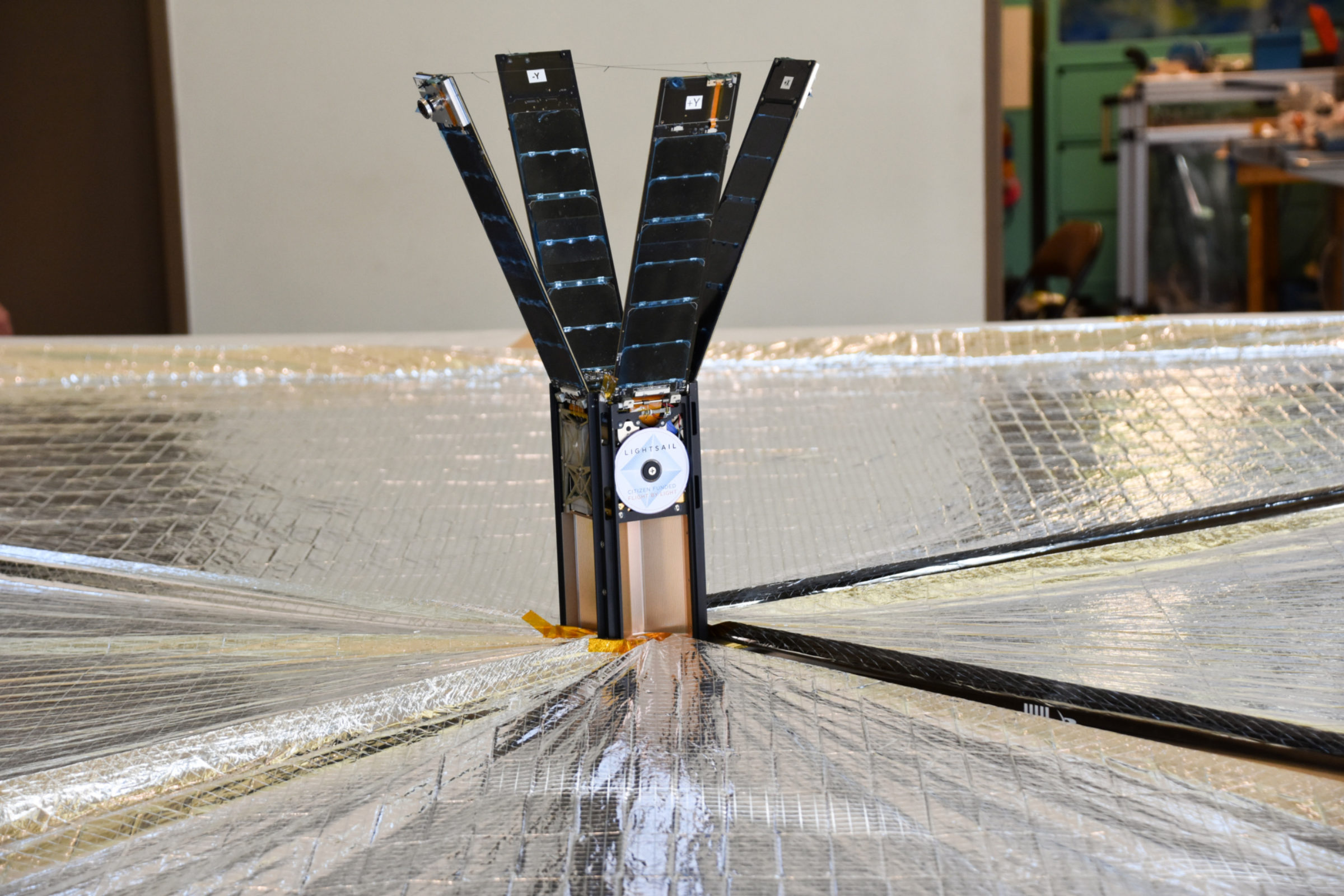
Software
The LightSail 1 test flight experienced several problems, most notably losses of contact due to battery faults and a radio glitch. LightSail 2 has new "watchdog timers" installed at both the hardware and software level that can kill hung processes and reboot the spacecraft if needed. The CubeSat is also equipped with battery circuit monitoring and protection controls that respond to battery faults in a more controlled fashion.
LightSail 2's attitude control algorithms, which allow the spacecraft to solar sail, have been overhauled. On the communications side, all imagery is now encrypted per NOAA requirements, and the spacecraft's telemetry beacons contain much more health and status information.
Ground stations
Our primary ground station and mission control will once again be at Cal Poly San Luis Obispo, with Georgia Tech acting as a secondary station. For LightSail 2, we also have two new ground stations: one at Purdue University, and another at Kauai Community College in Hawaii that gives us coverage beyond the continental U.S.
Let’s Go Beyond The Horizon
Every success in space exploration is the result of the community of space enthusiasts, like you, who believe it is important. You can help usher in the next great era of space exploration with your gift today.
Donate Today

 Explore Worlds
Explore Worlds Find Life
Find Life Defend Earth
Defend Earth


